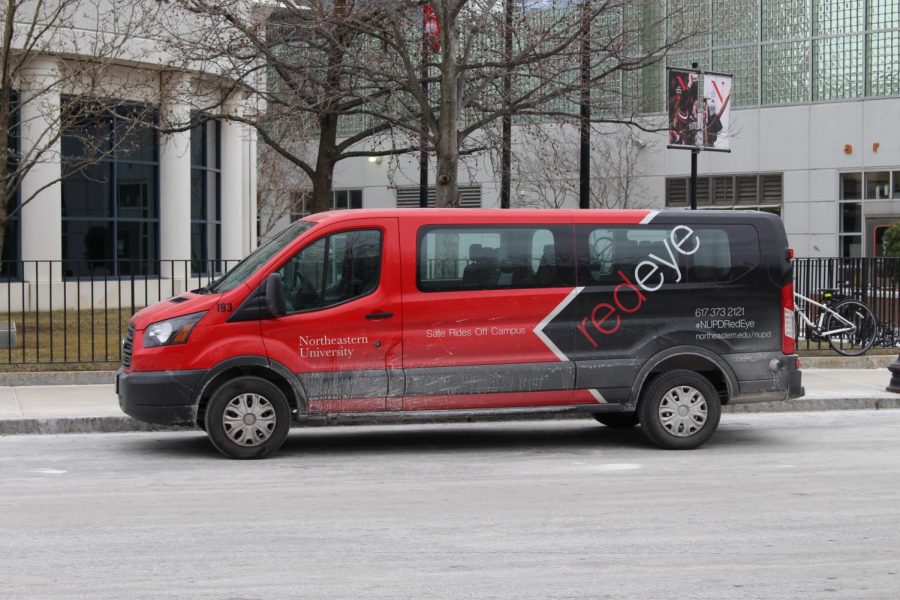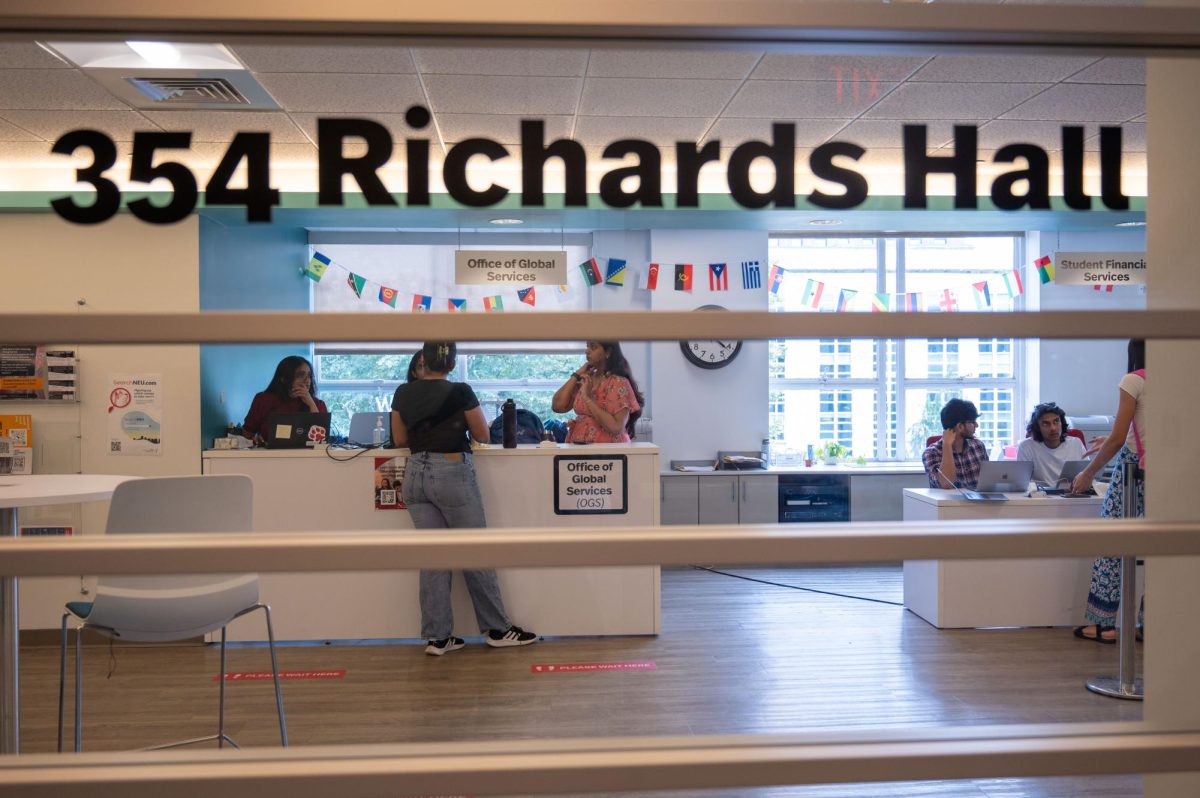NUPD pushes multiple safety initiatives as students are concerned on campus
File Photo by Hailey Ardizzone
The NU Red Eye van sits in front of Raytheon Amphitheater.
February 6, 2019
Students are concerned about safety on campus after two Northeastern students were robbed at gunpoint one block from campus last December. With options like safety escorts and apps, Northeastern students have different resources to stay protected. But are these options necessary or effective?
Fatema Janahi, a second-year computer engineering major, said they’re necessary. She said she feels unsafe walking through Ruggles at night and finds these resources useful.
“I’ve never used [the] Red Eye [shuttle] or anything, but I’ve used Northeastern escorts,” she said. “They’re helpful late at night, when it’s especially unsafe.”
When students arrive for orientation, the Northeastern University Police Department, or NUPD, briefs them on campus safety resources. These include the SafeZone app, Blue Light phones, the Red Eye shuttle and safety escorts, said NUPD Staff Sgt. John J. Farrell.
“We use orientation as a means to say, ‘Call us,’ because we are a police department,” Farrell said. “There are a tremendous amount of resources here to be safe, to stay safe and to utilize in order to reduce risk of victimization in any way, shape or form.”
While Farrell believes Northeastern is safe, he acknowledged that campuses in Boston have unique safety issues.
“The one thing that colleges and universities have around here is that they’re open campuses,” he said. “It’s very easy for someone to blend into open campuses and take advantage of liberties it provides.”
This is why Farrell wants Northeastern community members to download the SafeZone app. The free app allows users to notify NUPD in the event of an emergency.
“It’s quick and easy to get in touch with us,” he said. “If you have an emergency, you bring up the app and press a button, and you’re telling us by pressing that button that you have a very important situation and you need help and you need it fast.”
Janahi downloaded SafeZone, but she isn’t sure how effective it is.
“It’s not as helpful because you’re just pressing a button and you feel like, ‘What are you [going to] do?’” she said. “You’ll be dead by the time [NUPD] gets there.”
Students can also use the safety app Umergency, which provides a medical consent form, local emergency numbers and national hotlines. It also lets users notify their parents in an emergency, said AJ Schenbaum, Umergency’s vice president of strategy..
“Schools spend a lot of money on campus safety,” Schenbaum said. “There’s not one thing that will solve all of these issues out there, but hopefully we’re providing something that will create a little peace of mind and a little less anxiety out there.”
Schenbaum said students in the past were less concerned about safety. Now, he said, young people are more likely to utilize safety resources.
“Reality is changing. Students are concerned about their health and welfare and they want to be prepared,” Schenbaum said.
Farrell said he hopes Blue Light phones will help the Northeastern community feel safe. Students can locate these phone boxes, which are actually red, and other campus services by visiting bit.ly/nupdmap. Farrell said NUPD wants to place more of these phones on campus and equip them with voice technology and cameras.
“Some might argue it’s an older technology, so why do we have it?” Farrell said. “We firmly believe in Blue Light technology. If you lose your phone or it’s stolen and [Blue Lights] are your only means of communication to us, we want you to have it.”







